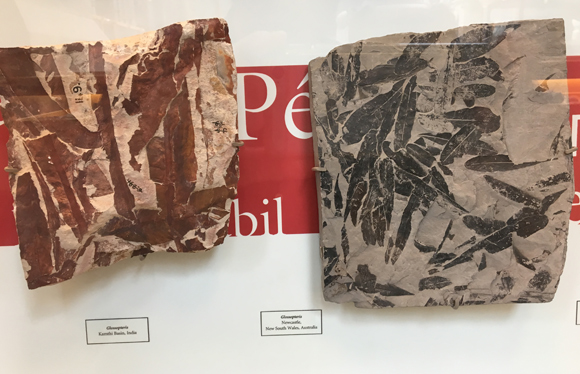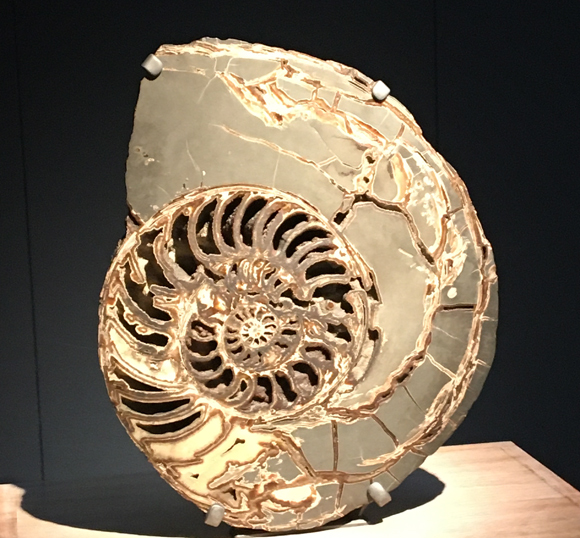Glossopteris Fossils Helped to Support the Theory of Plate Tectonics
The photograph (below), was taken at the Oxford University Natural History Museum (Oxford, England). The display shows various fossils of the leaves of a prehistoric plant referred to as Glossopteris. To be accurate, in palaeobotany, the term Glossopteris refers only to the tongue-shaped leaves of this seed-bearing, vascular plant distantly related to cycads and the ginkgo (Maidenhair tree).
Glossopteris
The Fossilised Leaves of Glossopteris on Display at the Oxford University Natural History Museum

Picture credit: Everything Dinosaur
Prehistoric Plants in Support of Plate Tectonics Theory
Fossil finds of glossopteris leaves helped to support the theory of plate tectonics. The photograph shows two fossils showing the tongue-shaped leaves of the gymnosperm Glossopteris. The one on the left is a fossil from the Kamthi Basin (India), whilst the one on the right comes from Newcastle in the state of New South Wales, (Australia).
The discovery of fossils of this Permian-aged plant found in South America, Africa, Antarctica, Australia and India helped to support the theory that in the distant past, these, now geographically separate landmasses once formed a giant, southern super-continent. This landmass is termed Gondwana.
Visit the Everything Dinosaur website: Everything Dinosaur.







Leave A Comment